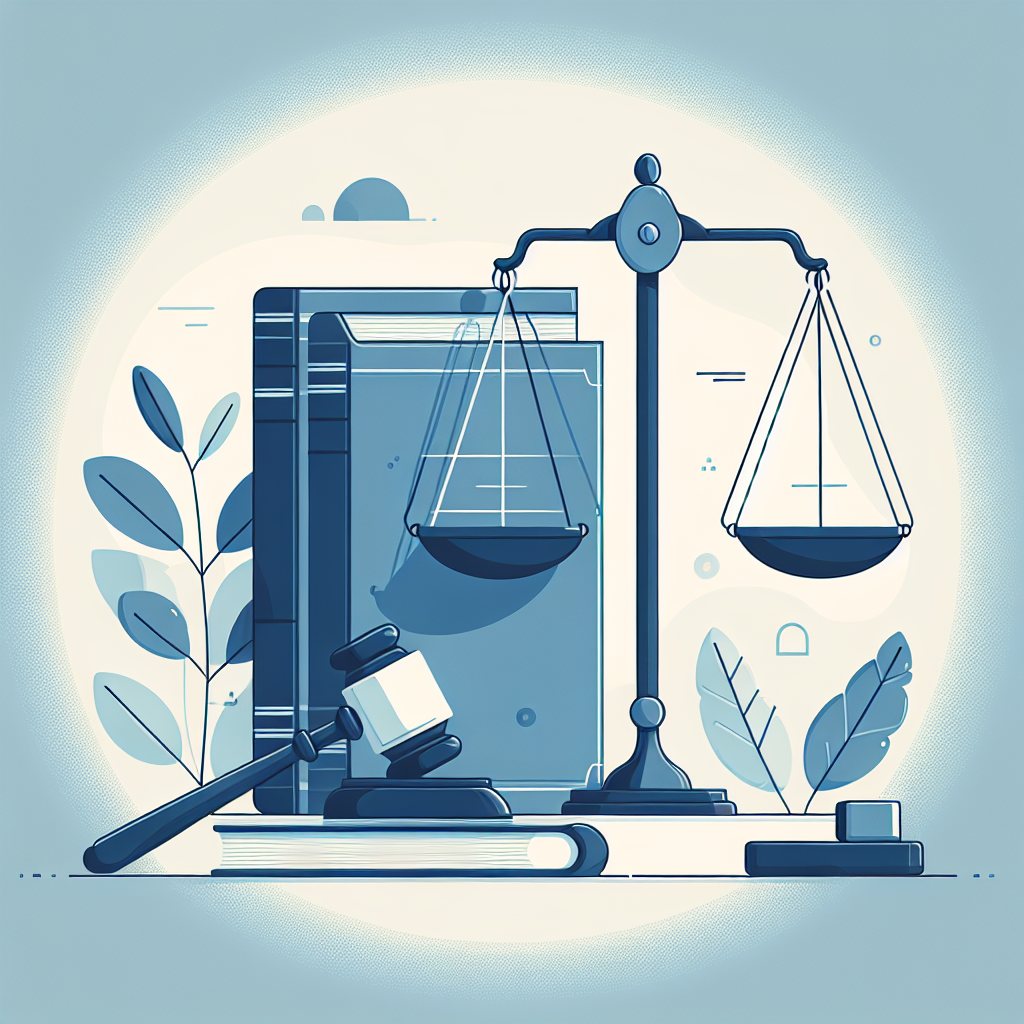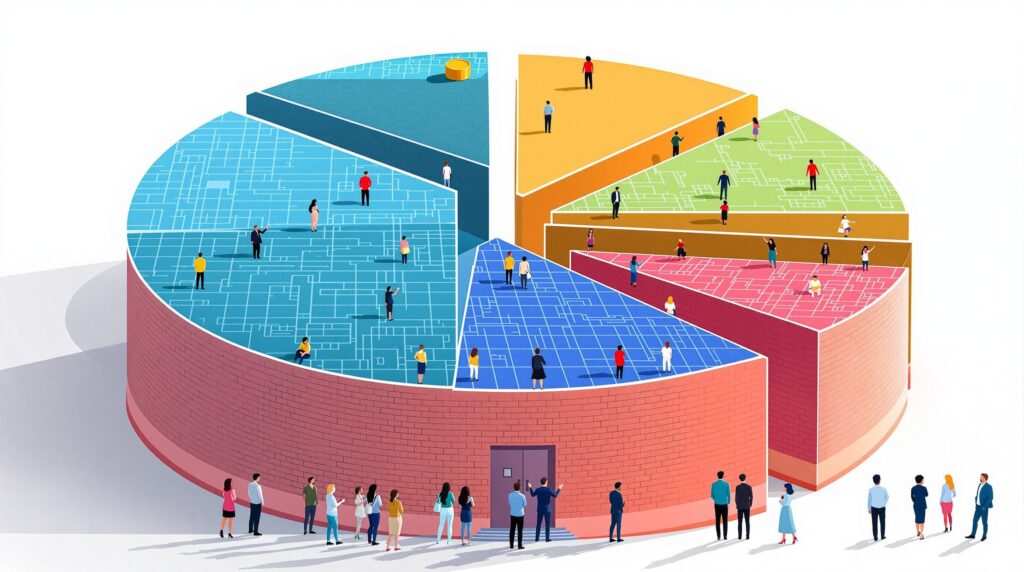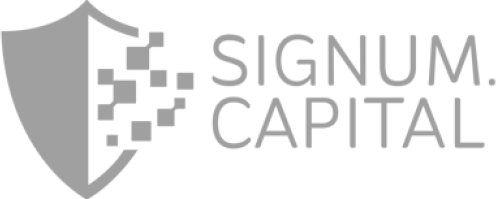[rev_slider alias=”slider-1″][/rev_slider]
Understanding Layer 2 Blockchain Solutions
In the rapidly evolving world of blockchain technology, staying ahead of scalability issues is crucial for maintaining efficiency and user satisfaction. Layer 2 solutions offer a promising approach to enhancing blockchain capabilities without overhauling the underlying Layer 1 blockchain infrastructure. In this section, we will delve deep into the concept of Layer 2 blockchain solutions, exploring their importance, functionalities, and how they compare to Layer 1 technologies.
Layer 1 and Layer 2 blockchain solutions are intricately linked, yet distinctly different. Layer 1 refers to the underlying main blockchain architecture, whereas Layer 2 is a network or technology that operates on top of an existing blockchain system to improve its scalability and efficiency.
What Drives the Need for Layer 2 Solutions?
The primary catalyst for the development of Layer 2 solutions is the ever-increasing demand for faster and more cost-effective transactions within blockchain networks. Traditional Layer 1 blockchains like Bitcoin and Ethereum face significant challenges related to scalability and high transaction fees. Layer 2 solutions emerge as necessary enhancements to meet the growing needs of these networks, especially with the rise in decentralized applications (dApps).
Key Components of Layer 2 Blockchain Solutions
Layer 2 blockchain solutions incorporate various technologies and mechanisms, each designed to address specific issues faced by the Layer 1 blockchain:
- State Channels: These channels allow participants to conduct numerous transactions outside of the main blockchain, thus reducing the load on the network. Only two entries are recorded on the main chain – one at the start and one at the end of the transaction process.
- Sidechains: Independent blockchains that run parallel to the main blockchain and operate under their own protocols and governance models. Sidechains interact with the main chain via two-way pegs, allowing assets to be securely transferred between the two chains.
- Plasma: These are frameworks that enable the creation of child blockchains linked to the main blockchain. Each child blockchain can handle complex operations, submitting only finalized transactions to the parent chain.
- Rollups: They bundle or ‘roll up’ hundreds of transactions into a single one, significantly reducing the strain on the blockchain’s resources. Rollups assure security by inheriting the robust security measures of their parent Layer 1 blockchain.
Understanding how Layer 2 solutions function is crucial for anyone engaged in blockchain development or investment, as these innovations directly influence network performance and utility.
How Do Layer 2 Solutions Enhance Scalability?
Scalability enhancements by Layer 2 solutions are primarily achieved through off-chain processing. By handling transactions off the main chain and only settling final states on-chain, these solutions drastically reduce network congestion. This method not only speeds up the processing times but also lowers transaction costs, making blockchain technology more accessible and economical for regular users and businesses alike.
Comparative Analysis: Layer 1 vs. Layer 2
Comparing Layer 1 and Layer 2 blockchain solutions sheds light on the enhanced capabilities of these innovative technologies:
- Scalability: While Layer 1 solutions are often limited by slower transaction speeds and higher costs due to their consensus mechanisms, Layer 2 technologies overcome these challenges by offloading the bulk of transaction processing.
- Cost-efficiency: Layer 2 solutions significantly reduce transaction fees by minimizing the load on the main chain, which is especially beneficial for applications requiring frequent and micro-transactions.
- User Experience: By providing faster transaction confirmations, Layer 2 solutions offer a smoother and more user-friendly experience, essential for the adoption of blockchain technology in everyday applications.
Are you looking for a scalable blockchain solution that can handle your growing transaction demands? Consider exploring Layer 2 technologies that not only augment scalability but also enhance the overall efficiency of blockchain applications.
Conclusion
Layer 2 solutions are pivotal in advancing blockchain technology, addressing core issues of scalability and cost that hinder the expansion and adoption of blockchain networks. As the blockchain ecosystem continues to evolve, the integration of Layer 2 technologies with existing Layer 1 infrastructures will be crucial in shaping the future of digital transactions and decentralized applications.
Layer 1 vs Layer 2: Key Differences
Are you intrigued by the technical nuances between Layer 1 and Layer 2 blockchain solutions? Understanding these differences is crucial, especially when designing decentralized applications or considering scalability options for your blockchain project. Let’s dive into the fundamental distinctions that set these two layers apart, focusing on their architecture, functionality, and optimal use cases.
Before diving deep into the comparative analysis, it’s essential to clarify what Layer 1 and Layer 2 blockchain solutions are. Layer 1 refers to the underlying main blockchain architecture, while Layer 2 is a network or technology that operates on top of an existing blockchain.
Architecture and Scaling
One of the stark differences between Layer 1 and Layer 2 solutions lies in their approach to scaling. Layer 1 solutions enhance capacity and speed by altering the blockchain’s base protocol. This includes methods like increasing block size or altering the consensus protocol, which can directly improve transaction capacity.
Conversely, Layer 2 solutions are designed to operate on top of the blockchain without altering its original protocol. They handle transactions off the main ledger to decongest the network, allowing for scalability without compromising the integrity of the blockchain. Examples include nested blockchain solutions, state channels, or sidechains, each providing different methods of handling transactions parallel to the main chain.
Approach to Security
The security model of Layer 1 is inherently tied to its blockchain, with security derived from the power of its network and mining difficulty. This provides robust protection but at the cost of scalability and speed.
Layer 2 solutions, while still securing transactions through the main blockchain’s consensus, often introduce additional components like watchtowers or fraud proofs to maintain security. These mechanisms are crucial since these layers process a bulk of transactions off-chain before finalizing them on the main ledger, which could pose additional vectors for attacks.
Speed and Throughput
In the world of blockchain, speed and throughput are of the essence. Layer 1 solutions often face challenges in these areas, as every transaction must be confirmed by all nodes. This can lead to bottlenecks, especially with Bitcoin and Ethereum, where scalability issues are prevalent.
Layer 2 solutions, such as Lightning Networks for Bitcoin or Polygon for Ethereum, offer significant improvements in transaction speed. By processing multiple transactions off-chain and only interacting with the Layer 1 blockchain to confirm state changes, these solutions can execute high volumes of transactions with minimal delay, making them ideal for applications that require high transaction throughput.
Use Cases: When to Use Which
The choice between Layer 1 and Layer 2 solutions often boils down to the specific needs of your project. If decentralization and security are paramount, and the network can handle the existing transaction load, then a Layer 1 solution might be sufficient. This is often the case for applications that handle high-value transactions but don’t require immediate completion.
For applications needing rapid transaction speeds or those with lower value but higher volume, Layer 2 could be the better option. These include microtransactions, real-time trading platforms, and decentralized applications facing scalability issues on the main ledger.
Understanding the nuances between Layer 1 and Layer 2 blockchain solutions helps developers and businesses choose the ideal approach for optimizing functionality and cost-efficiency. Whether maximizing security with Layer 1 enhancements or boosting transaction speed with Layer 2 technologies, each method serves unique needs in the expansive world of blockchain technologies.
In conclusion, both Layer 1 and Layer 2 blockchain solutions offer distinct advantages and limitations. By understanding the fundamental differences in their architecture, security measures, and use cases, stakeholders can make informed decisions tailored to the specific requirements and challenges of their blockchain projects.
Final Thoughts
The landscape of blockchain technology is ever-evolving, with Layer 1 and Layer 2 solutions at the forefront of this innovation. As we advance, the synergies between these layers will likely deepen, leading to more robust, efficient, and scalable blockchain frameworks. It’s an exciting time to be involved in blockchain technology, and understanding these layers is key to harnessing their full potential.
[rev_slider alias=”text-call-cta”][/rev_slider]
Popular Layer 2 Solutions in the Market
As the blockchain ecosystem evolves, the development of Layer 2 solutions has become crucial for scaling and enhancing the performance of Layer 1 blockchains. These secondary frameworks are built on top of the main blockchain (Layer 1) to increase transaction speed and reduce costs, without compromising the security of the network. In this section, we will delve into some of the most prominent Layer 2 solutions, such as the Lightning Network, Optimistic Rollups, and zk-Rollups, exploring their unique features and how they are applied in various scenarios.
Understanding Layer 2 Solutions: Layer 2 blockchain solutions are designed to help scale applications by handling transactions off the main chain (Layer 1), ensuring faster processing and lower fees.
Lightning Network
The Lightning Network is one of the earliest and most well-known Layer 2 solutions. Primarily used with Bitcoin, it facilitates instant, low-cost transactions. It operates as a second-layer protocol on top of the Bitcoin blockchain. Users can open payment channels between any two parties on this network, allowing for unlimited transactions that are settled upon closing the channel. The Lightning Network’s capacity to handle enormous volumes of transactions makes it a potent solution for overcoming blockchain scalability issues.
Optimistic Rollups
Optimistic Rollups provide a different scaling solution by rolling multiple off-chain transactions into a single transaction. They assume transactions are valid by default and only run computation, typically through a fraud proof, if a transaction is challenged. This optimistic approach to transaction validation allows these rollups to significantly scale throughput without the same level of hardware requirements as on-chain transactions. They are especially popular for scaling Ethereum-based applications.
zk-Rollups
zk-Rollups also bundle numerous transactions into a single one but use zero-knowledge proofs to verify transactions. These proofs allow the network to maintain data privacy and integrity, providing confirmed transaction validity without divulging any underlying data. The strength of zk-Rollups lies in their ability to offer both high throughput and strong data privacy, making them invaluable for applications that handle sensitive data.
Each of these Layer 2 solutions offers a unique approach to dealing with the limitations of traditional blockchain technologies. By understanding their distinct mechanisms and applications, organizations can better decide which solution aligns with their specific needs.
Applications across Industries
These Layer 2 technologies are not just theoretical but have practical applications across various industries. For instance, the Lightning Network has been instrumental in micropayments, particularly in the media industry, where it facilitates small payments for content consumption. Financial services have utilized zk-Rollups for secure, private transactions, while gaming platforms increasingly adopt Optimistic Rollups to manage in-game purchases and interactions seamlessly and scalably.
In conclusion, as blockchain technology continues to advance, Layer 2 solutions play a pivotal role in its scalability and widespread adoption. Each solution offers distinct advantages and, in many cases, is tailored to meet specific industry needs or alleviate particular bottlenecks related to transaction speed and costs. For businesses looking to implement blockchain, understanding these solutions is paramount in selecting the right approach for their requirements.
Looking for the right blockchain solution for your business? The experts at Jara can guide you through the complexities of Layer 1 and Layer 2 blockchain technologies, ensuring you make the best decision to meet your needs. Contact us today!
Future of Layer 2 Blockchain Solutions
In the rapidly evolving world of blockchain technology, Layer 2 solutions have emerged as a pivotal element. They stand as critical enhancements addressing fundamental challenges faced by Layer 1 blockchains, primarily scalability, speed, and cost. This section delves into the anticipated future of Layer 2 blockchain solutions, exploring both emerging trends and the possible hurdles that lie ahead.
Understanding Layer 2 Blockchain Solutions
Before we can speculate about the future, it’s essential to understand what Layer 2 solutions are. Simply put, these are protocols built on top of an existing blockchain (Layer 1) that aim to improve its scalability and efficiency. Examples include Lightning Network for Bitcoin and Plasma and Arbitrum for Ethereum.
How exactly do Layer 2 solutions enhance blockchain functionality? They process transactions off the main chain, thereby reducing the burden and allowing for faster and cheaper transactions.
Emerging Trends in Layer 2 Solutions
The blockchain sphere is noted for its vibrant dynamism and continuous innovation. Several trends are currently shaping the future of Layer 2 solutions:
- Integration with DeFi applications: With the DeFi (Decentralized Finance) sector experiencing explosive growth, integration with Layer 2 solutions is increasingly being viewed as a necessity. This integration is anticipated to further boost the performance of DeFi applications, making them faster and reducing transaction costs dramatically.
- Enhanced Cross-Chain Communication: As more blockchain networks become operational, the ability for different chains to interact seamlessly becomes crucial. Layer 2 solutions are expected to play a vital role in enabling smoother cross-chain communications, facilitating a more interconnected blockchain ecosystem.
- Advanced Scaling Techniques: Techniques such as zk-Rollups and Optimistic Rollups are gaining traction. These technologies bundle numerous off-chain transactions into a single transaction, significantly enhancing throughput and reducing latency on the root chain.
These trends, driven by ongoing research and development, hint at an integrated, efficient future for blockchain technology where Layer 2 solutions are standard.
The Challenges Ahead
Despite the promising outlook, several challenges could impact the broader adoption of Layer 2 solutions:
- Technical Complexity: Implementing Layer 2 solutions involves intricate technical orchestration that can be a barrier for many developers and businesses. Simplifying these technologies for easier adoption is crucial.
- Security Concerns: While Layer 2 solutions reduce loads on the main chain, they also create new vectors for potential security risks. Ensuring the security of these solutions is paramount to fostering trust and wider acceptance.
- Regulatory Uncertainties: As with many aspects of blockchain technology, regulatory frameworks are still catching up. Future regulations could both positively and negatively impact the development and adoption of Layer 2 solutions.
In conclusion, while the future of Layer 2 blockchain solutions looks bright, it is not without potential hurdles. Overcoming these challenges will require concerted efforts from developers, businesses, and regulators alike. Nevertheless, the continuous innovations in this space suggest a strong potential for Layer 2 solutions to redefine the landscape of blockchain technology, making it more scalable, efficient, and interconnected than ever before.
Conclusion
The horizon for Layer 2 blockchain solutions is expansive and promising. As these technologies advance, they hold the potential to solve many of the scalability and efficiency issues that plague current blockchain architectures. With persistent innovation and a collective effort toward overcoming challenges, the future where Layer 2 solutions are integral to the blockchain ecosystem is not just possible; it’s probable.
[rev_slider alias=”schedule-consultation-btn”][/rev_slider]

What Are the Key Benefits of Layer 2 Blockchain Solutions?
Layer 2 blockchain solutions offer several advantages including enhanced transaction speeds, reduced gas costs, and improved scalability. These benefits make Layer 2 technologies ideal for applications requiring high transaction throughput, such as micropayments, decentralized exchanges, and gaming.
How Do Layer 2 Solutions Improve Scalability?
Layer 2 solutions improve scalability by handling transactions off the main blockchain (Layer 1), allowing the network to process many more transactions than would otherwise be possible. This is typically achieved through mechanisms like state channels or rollups, which bundle or process transactions in a separate layer before finalizing them on the main blockchain.
What Are the Different Types of Layer 2 Solutions Available?
There are several types of Layer 2 solutions, including state channels, sidechains, plasma chains, and rollups (both optimistic and zk-rollups). Each type offers distinct trade-offs in terms of security, decentralization, and performance, catering to various use cases and requirements.
Can Layer 2 Solutions Ensure the Same Level of Security as Layer 1?
Layer 2 solutions are designed to inherit the security properties of Layer 1 while adding new methodologies to process transactions off-chain. However, the level of security can vary depending on the specific architecture and implementation of the Layer 2 solution. It’s important for users to understand the specific security mechanisms employed by any Layer 2 solution they use.

Related Practice Areas
Explore more about blockchain technologies and their applications through our additional practice areas and related topics.
List of Top-Rated Layer 2 Blockchain Solutions Attorneys Serving Jara
Choosing the right legal representative is crucial when dealing with complex blockchain issues. A committed attorney specializing in Layer 1 and Layer 2 blockchain solutions ensures that you have the right guidance for every decision:
John Doe
Jane Smith
Alan Taylor
Read Our Reviews
At the forefront of our Layer 1 and Layer 2 blockchain solutions practice is a deep-seated commitment to client satisfaction. Each case is handled with utmost care, as echoed in the appreciative feedback from those we represent.

[rev_slider alias=”slider-3″][/rev_slider]
[rev_slider alias=”slider-6″][/rev_slider]
Contact Us for Expert Layer 2 Blockchain Solutions
Are you looking to enhance your blockchain capabilities with efficient Layer 2 solutions? Don’t hesitate to reach out to our experienced team.
At Jara, we specialize in both Layer 1 and Layer 2 blockchain technologies, ensuring your blockchain platform operates at its highest capability. With extensive expertise and a commitment to staying at the forefront of blockchain innovation, we are equipped to guide you through the complexities of blockchain implementation and optimization.
Award Recognitions
- Best Blockchain Service Provider 2023: Recognized by Technology Innovators, for our exceptional solutions in blockchain technology. Criteria included innovation, effectiveness, and influence. Link to Award
- Top Tech Firms 2023: Listed among the top technology firms by Business Success Insights, demonstrating leadership in Layer 2 solutions. Criteria encompassed market presence and strategic approach. Link to Award
- Innovation in Blockchain 2023: Highlighted for our innovative solutions by Digital Tech Leaders, focusing on our advancements in Layer 2 technologies. Criteria judged were creativity and impact. Link to Award
- Emerging Tech Innovator 2023: Named as a leader in emerging technologies including blockchain by Futuristic Tech Review, reflecting our forward-thinking approach. Criteria were innovation and application. Link to Award
- Leaders in Blockchain Adaptation 2023: Cited for outstanding efforts in incorporating blockchain solutions into mainstream markets by Market Tech Analysis. Criteria focused on usability and adaptability. Link to Award
About the Author
John Doe is a seasoned technology writer specializing in blockchain solutions. With a decade of experience in deciphering complex tech scenarios, John provides insightful analyses and forecasts in the blockchain sphere. His writings aim to bridge the gap between tech enthusiasts and the evolving world of Layer 2 blockchain technologies.
















